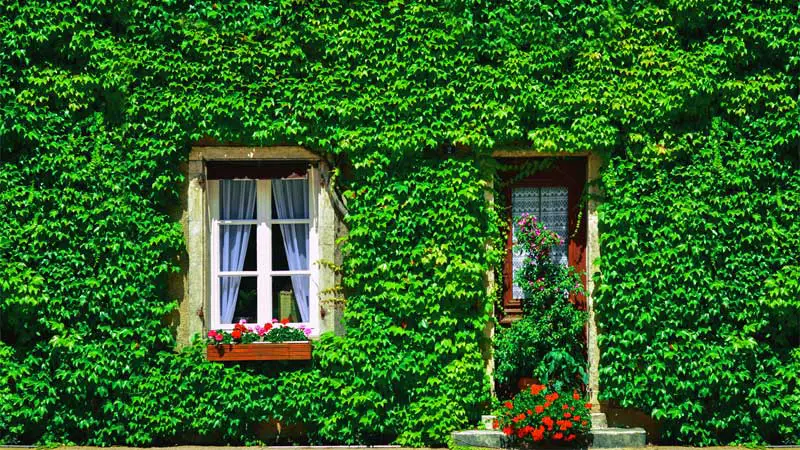When it comes to attractive (or annoying) climbing vines, you’ve probably been itching to learn about ivy, a popular choice for adding greenery to walls, fences, and other structures (whether you want it to or not). But there’s actually a lot more to ivy than meets the eye.
For example, did you know that all true ivy plants belong to the genus Hedera? There are only about 12 to 15 actual species of ivy, and many of the “ivy” plants you know are actually not ivy at all. These imposters are often so similar that the average person can’t tell the difference.
Another fascinating fact is that all true ivy plants go through a metamorphosis during their lifetime. Its leaves start off lobed and it tends to grow into dense patches of ground cover until the plant reaches adulthood. This change is triggered when it finds a surface to climb, such as a wall or tree. The stems become woody vines, and the leaves lose their lobes.
That said, here are 17 different types of both true and false ivies.
See Also: 28 Types of Ferns
Types of Ivy
1. Algerian Ivy (Hedera algeriensis)
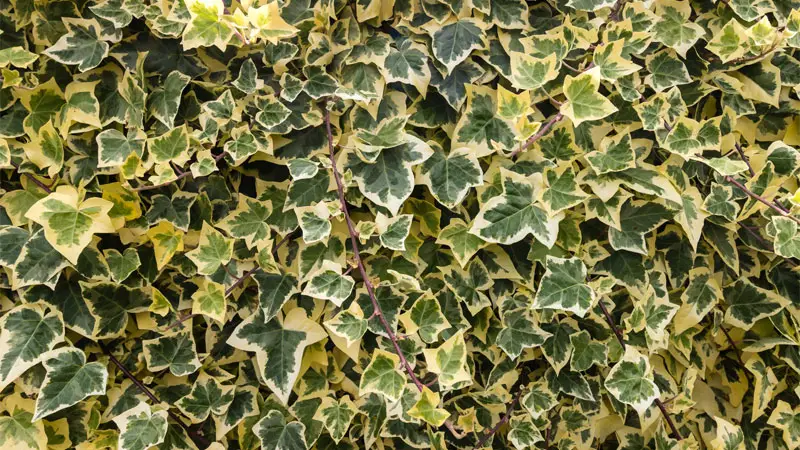
One of several popular species of Hedera (AKA Canary Island ivy), this species comes from West Africa and has reddish stems and alternating solid green or variegated arrow-shaped leaves.
The leaves are 4-6” long, which helps set it apart from English ivy. It can be grown in zones 7-10, but should be grown with caution due to the sap.
Known to be a skin irritant, ingestion of this plant’s sap can lead to a wide range of negative effects, from excessive drooling to coma.
2. Azores Ivy (Hedera azorica)
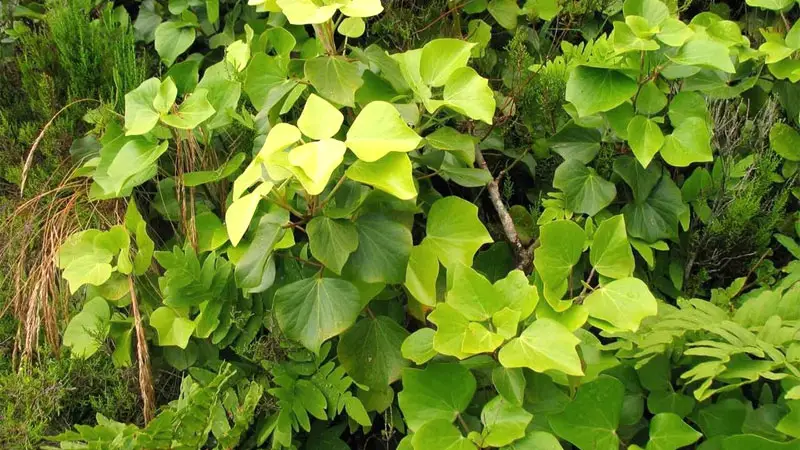
Another species of Herera, this time coming from the Azores (hence the name). It’s a popular choice for gardens, as it will remain a groundcover as long as it can’t climb, and the adult plants produce umbels of small flowers.
The only downside is that this species is known to be destructive towards wood surfaces.
3. Boston Ivy (Parthenocissus tricuspidata)
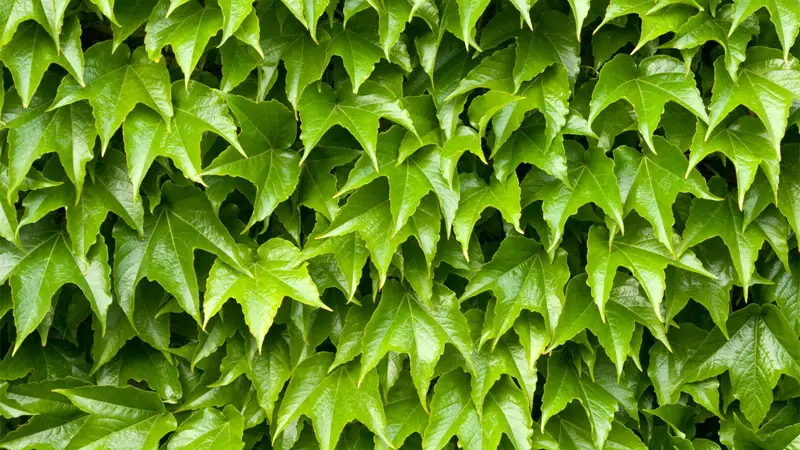
This vining plant is actually a relative of grapes instead of a true ivy and has broad green deciduous leaves. Boston Ivy was the plant that gave ivy league schools their name, which may well explain why said schools are overpriced and underperforming against many smaller colleges and universities.
One attractive feature of this plant is the small blue berries it produces, which are a major draw for birds.
4. Canarian Ivy (Hedera canariensis)
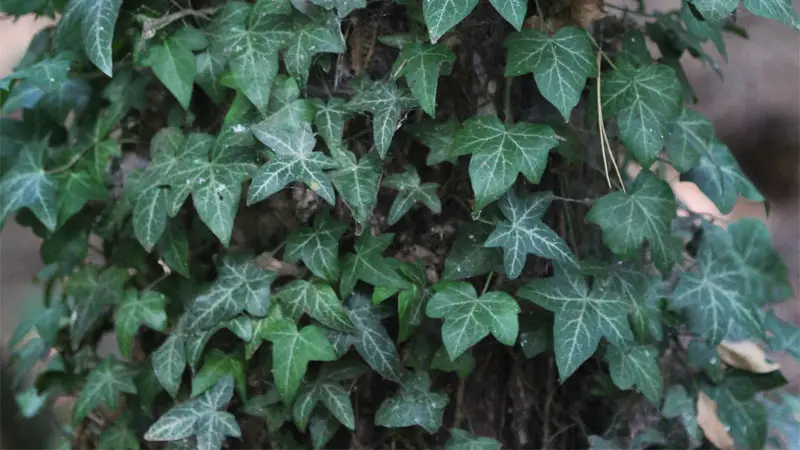
This ivy plant is native to North Africa and the Canaries, resulting in it sharing common names with other Canary Island species. Its stems are reddish and the leaves can grow up to 6” in size.
Be warned that the berries are quite attractive but also quite poisonous, so it’s best to grow this species where children or pets won’t go nibbling.
5. Cape Ivy (Senecio mikanioides)
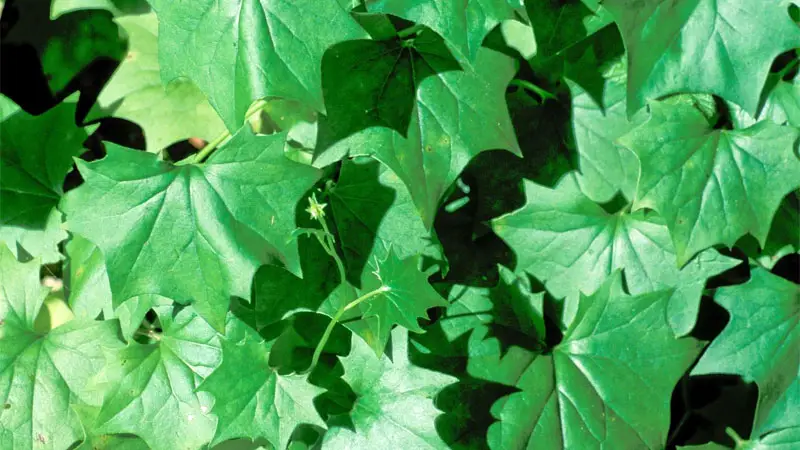
Bearing a striking resemblance to English ivy, this false ivy species is more than a little confusing. It gets its common name from the fact that it originates in South Africa, but it’s also often referred to as German Ivy.
Despite this identity crisis, cape ivy is a great choice for its lush, glossy foliage and slightly less aggressive growth compared to English ivy.
6. Cyprus Ivy (Hedera cypria)
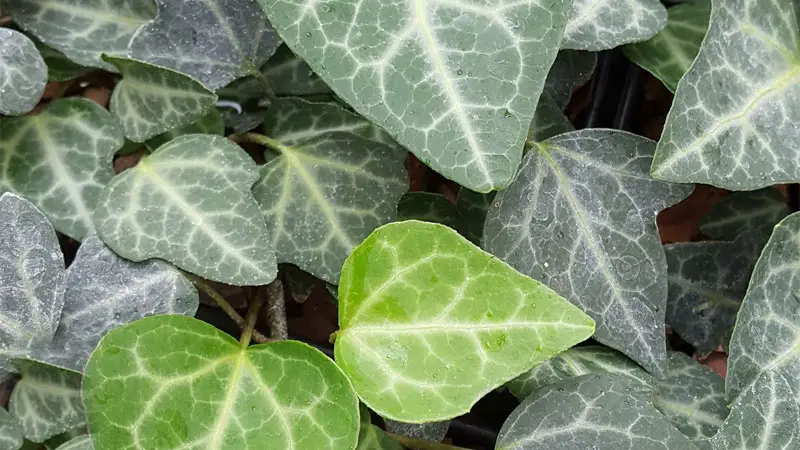
Originally from the isle of Cyprus (do you notice a pattern in naming conventions yet?), this evergreen vine prefers high, rocky ground.
It’s a great choice due to its more unique appearance – red stems and un-lobed green leaves with white patterning and grey veins. It also tends to be a slow grower and produces black and blue berries that resemble backwards acorns.
7. English Ivy (Hedera helix)
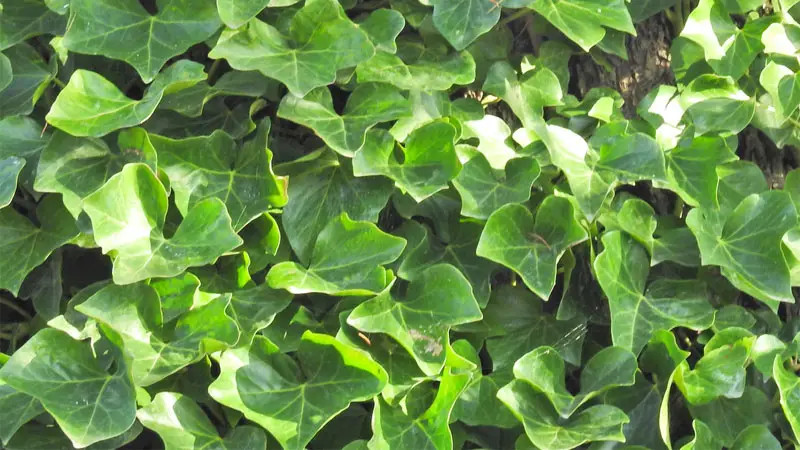
Perhaps the single most common type of ivy out there, English ivy is highly invasive and can quickly grow out of control. It tends to be fairly dense and has several popular varieties and cultivars which are sometimes even more widespread than their parent plant.
These varieties and cultivars include: ‘Adam’, ‘Aloma’, ‘Angel Snow’, Anita, ‘Amber Waves’, ‘Bettina’, ‘Buttercup’, ‘Goldchild’, ‘Shamrock’, and ‘Tussie Mussie’.
8. Himalayan Ivy (Hedera nepalensis)
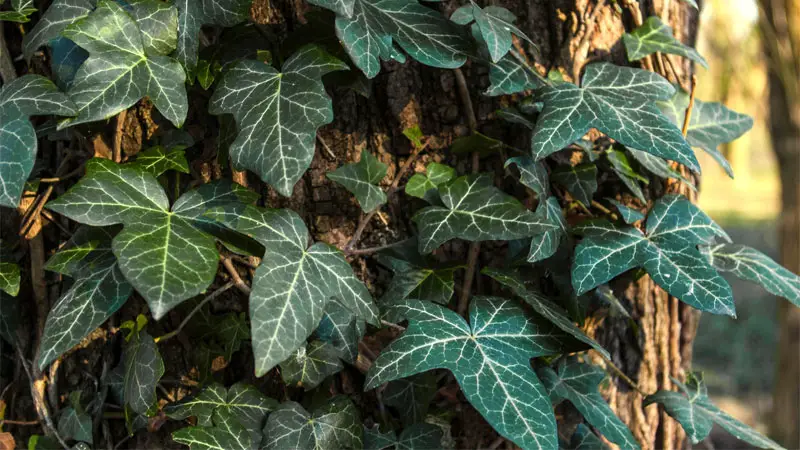
This true ivy’s name is something as a double entendre, as it not only lives in the Himalayan mountains, but can grow to a mountainous 100’ tall in its native habitat.
While highly toxic if ingested, the plant has attractive greyish-green foliage and produces greyish white blooms in September and October.
9. Iberian Ivy (Hedera iberica)
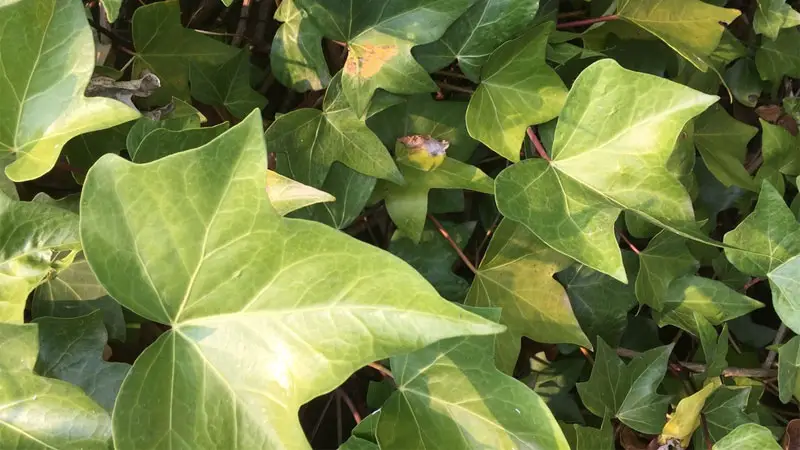
It’s not clear whether you should speak to this species in Spanish or Portuguese, but it will definitely speak to you with its greenish-white blooms that appear for nine months out of the year.
Its stems are green to brownish green and may have hints of purple or red. Meanwhile, its leaves are quite large, measuring up to 8.5” and having up to five lobes. Another lover of rocky surfaces, this vine can reach about 98’ in height.
10. Irish Ivy (Hedera hibernica)
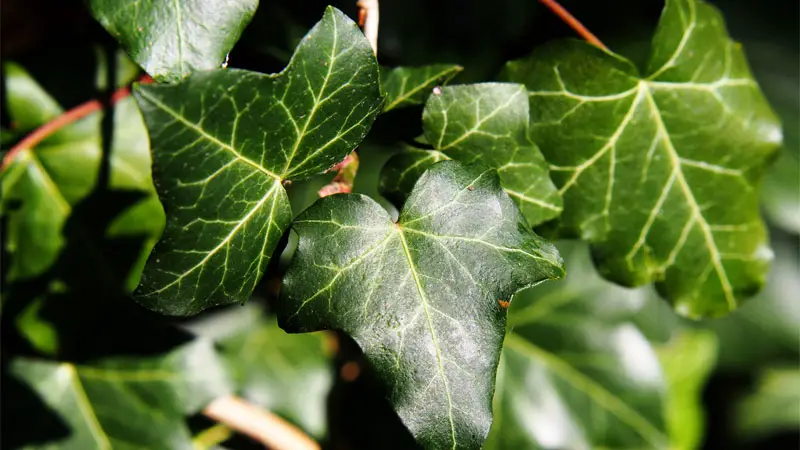
Not to be outdone by its English counterpart, Irish ivy has a personality very befitting of the redheads in its native land. The plant gives off a sweeter scent compared to English ivy, but is far more aggressive.
The foliage also tends to be larger with less pronounced veins and a pale underside. Its bark fades from green to light grey as it ages, and it flowers in September and October, giving way to the usual bluish black berries.
It’s an extremely popular plant, even winning awards, but be cautious when you grow it as (like redheads) it looks gorgeous but can be poison if not handled respectfully.
11. Japanese Ivy (Hedera rhombea)
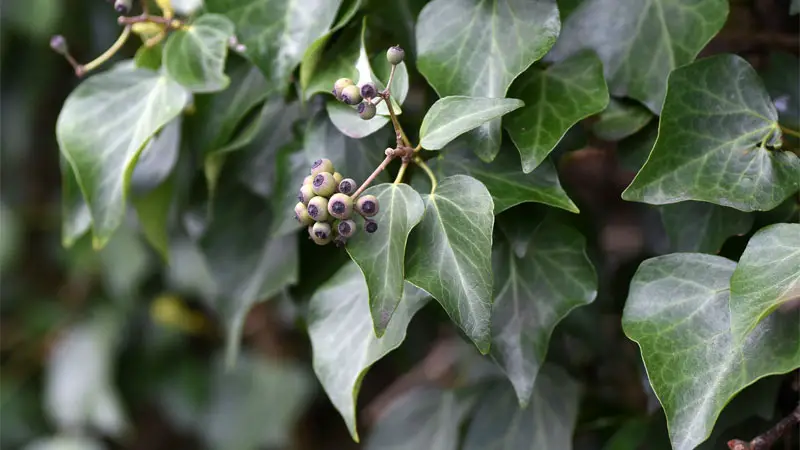
Known natively as songak, this species was originally called Hedera pedunculata and can be found throughout Japan and Korea, as well as the coastal areas of Taiwan and China. It gets its scientific name from the diamond-shaped leaves.
Note that this plant’s sap is an irritant as well as toxic, although it’s still a popular garden option if you wear gloves when handling.
12. Madeiran Ivy (Hedera maderensis)
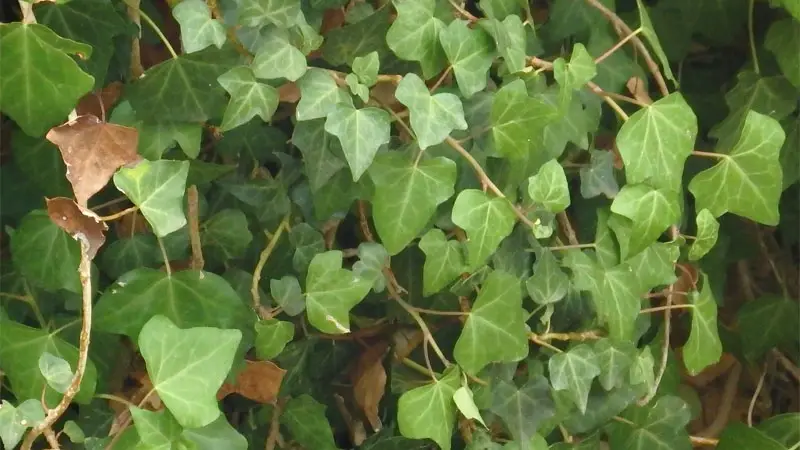
Hailing from Madeira Island, this ivy has small greenish-yellow leaves measuring up to 8.5 inches that gather into dense umbrellas. The flowers appear between April and December, and are often used in floral arrangements.
Read Also: 25 Types of Lemon Trees
13. Moroccan Ivy (Hedera maroccana)
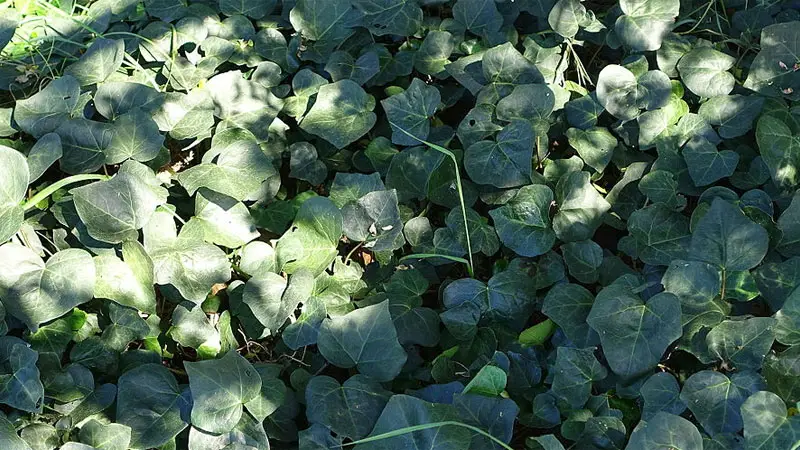
Another species common to the Canary Islands, Moroccan ivy was once believed to be the same species as English Ivy (as were many ivies).
It has green to greenish-brown stems which sometimes have traces of purple or red, with broad leaves that grow up to 8.5” long and have a slightly leathery texture to them.
14. Pastuchov’s Ivy (Hedera pastuchovii)
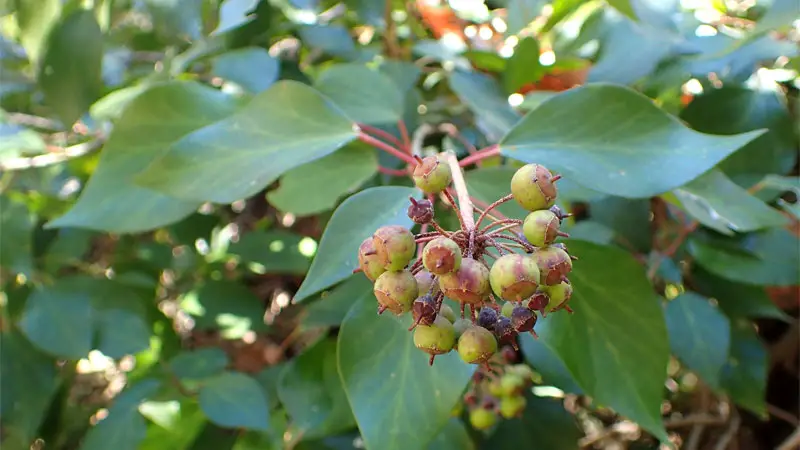
Found throughout Armenia, Azerbaijan, and Georgia, this ivy has thin, glossy light green leaves that may include wavy margins. Sometimes referred to as Russian ivy, the plant’s rounded leaves and aversion to being a groundcover set it apart from other ivies.
Its native habitat is shrinking, with three nature reserves protecting it and other local species from extinction. If nothing else, this makes for a good excuse to bring one of these attractive ivies home.
15. Persian Ivy (Hedera colchica)
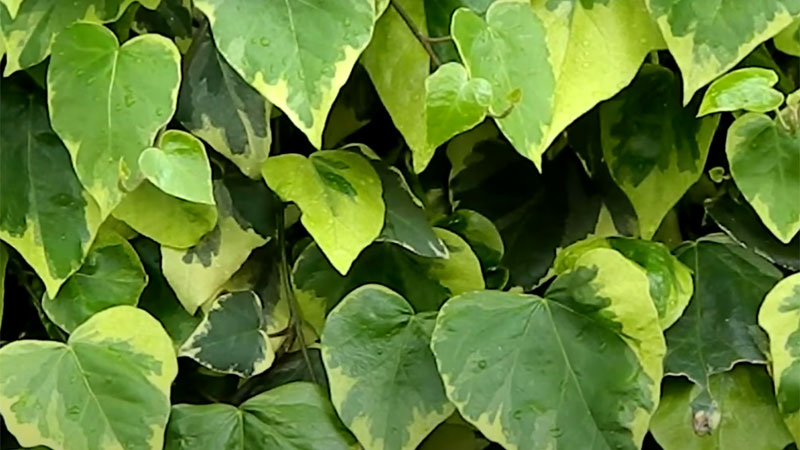
One of the most impressive species, Persian ivy can handle much colder climates than some of its relatives and is a dense grower. Its evergreen, heart-shaped leaves reach an impressive 10” long and 6” wide.
The small, greenish blooms appear from late summer through autumn and attract bees and other pollinators. Its berries appear in winter or early spring and are a valuable food source for birds.
Three of its cultivars have won the Royal Horticultural Society’s Award of Garden Merit, making this an excellent species to add to your home for both its beauty and environmental benefits.
16. Poison Ivy

Perhaps the most notorious ivy on this list (while not even being ivy), Poison Ivy is a former scientist who… wait, wrong article.
The plant poison ivy is now considered to be three different species: Asian poison ivy (Toxicodendron orientale), eastern poison ivy (Toxicodendron radicans), and western poison ivy (Toxicodendron rydbergii). These plants are a common food source for animals and birds, and are actually related to pistachios.
All three species are easily spotted by the groupings of three leaflets. The plants secrete a resin called urusol that bonds to the skin within 30 minutes of contact that can cause mild to severe reactions, according to the Mayo Clinic.
Getting this resin on your genitals or breathing the smoke of burning ivy (if there’s a reaction to the fumes) will require medical attention.
Read Also: 23 Different Cactus Types
17. Swedish Ivy (Plectranthus verticillatus)
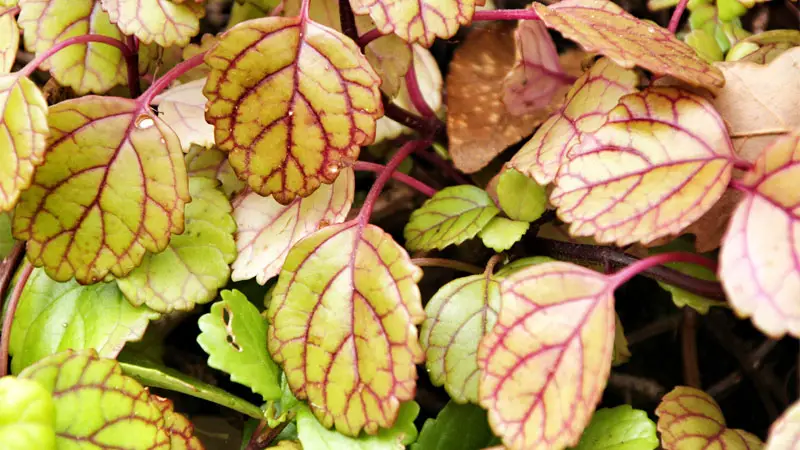
This popular false ivy plant is an imposter in more ways than one – Like Swedish fish, it actually doesn’t come from or even exist in Sweden.
Instead, it hails from southern Africa and has been previously called both Plectranthus Australis and Plectranthus nummularius. Its aromatic, glossy green leaves boast a purple center that can also be found tinting the stems.
Meanwhile, it produces racemes sporadically throughout the year, especially in spring and late autumn, which boast pale shades of pink, purple, or white and contain 2 to 4 flowers each.

